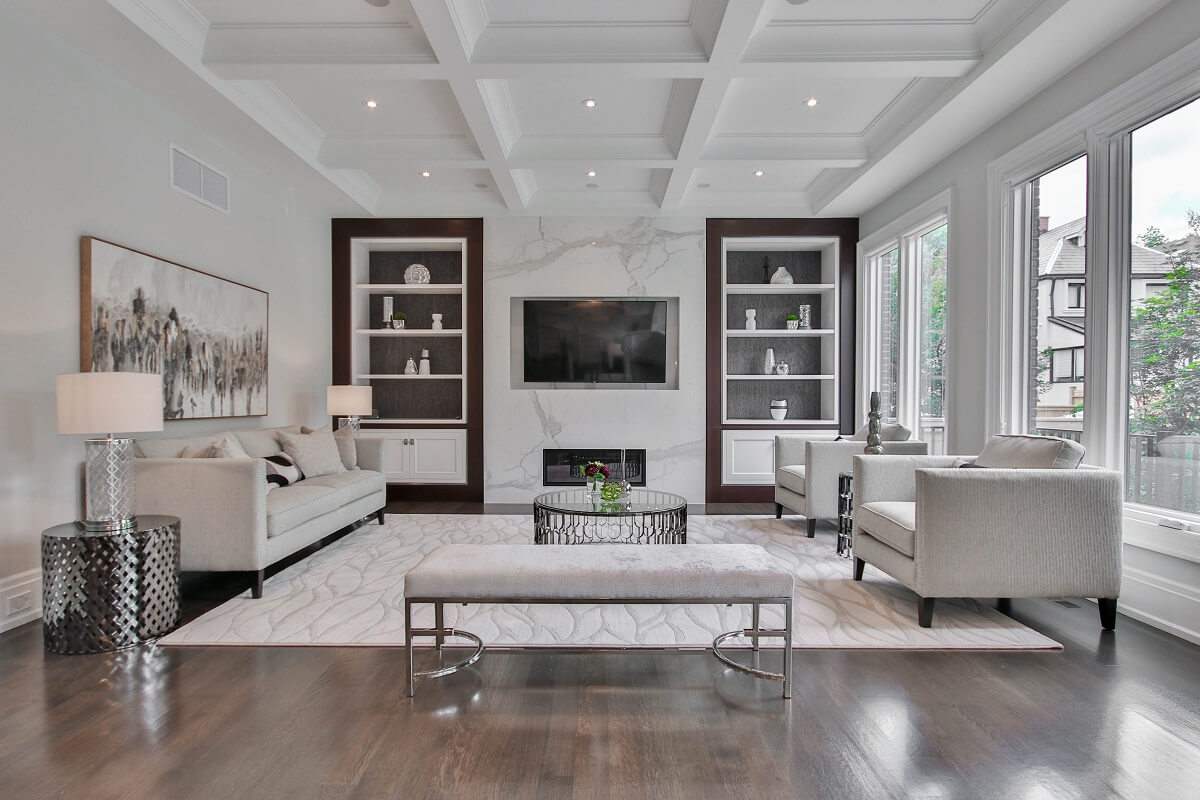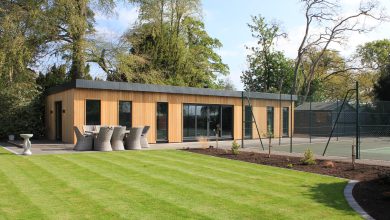How to Arrange Furniture in a Living Room like a Pro

While some people relish the notion of rearrangement and redesigning their living spaces, others find the effort daunting. So many factors come into play when it comes to decorating your space. Moving things about and hoping for the best isn’t enough to organize furniture. Before commencing on such a project, several factors should be considered, including the arrangement of your living room, lighting, traffic flow across the area, and, of course, the visual balance of your space.
Start with this basic approach if you’re unsure where to begin when arranging living room furniture. Knowledge is power, as the adage goes, and these professional tips and tricks will have you arranging furniture like a master in no time!
How much you change, rearranging a living area might be inexpensive or quite expensive. You may still make a statement by moving furniture around or altering the lighting if you don’t have the funds for major alterations.
It All Begins with a Strategy
While experienced designers may be able to put together a fantastic room in the blink of an eye, most of us will need to start with a plan. The best thing you can do is obtain some graph paper and do a basic drawing of your living room and the layout you want to use.
Draw in important features like windows, storage units, fireplaces, and doors to help you picture where larger pieces like sofas and coffee tables should go. If you want to buy any new things for your lounge, these plans will help you determine whether or not they will fit. If drawing isn’t your thing, you can use an online floor planner or hire a professional designer. If you decide to try drawing, keep in mind that it doesn’t have to be perfect. It’s only a preliminary estimate of what will fit your living room.
Choose a focal point.
You’ll want to choose a focal point after you have a good notion of the arrangement of your area. Focal points are an important component of interior design since they may enhance the environment and tie everything together. A focal point is the section of the space that normally catches the most attention, so you want it to make a good first impression. Because the focal point is the show-stopper of the lounge, you’ll want to emphasize the room’s best qualities.
In the case of a fireplace or a wide bay window, focal points can emerge spontaneously. Other times, however, you’ll have to make one. As a general rule, the sofas should face the main point (such as a fireplace, shelving unit, or television stand.) You can also add artworks, accent walls, plant displays, or statement pieces of furniture to the space.
A good focus point could also have a light source to emphasize it even more. Examples are lamps, pendant lights, wall sconces, and ceiling lights. Hear about your tricks and suggestions for contractors in London.
Allow for Conversation Spaces
In any home, the living room is one of the most important spaces for socializing and connection. As a result, you’ll want to make sure there’s plenty of room for a talk. You’ll want to make sure that your sofas and chairs are situated so that people can easily converse. They should be placed close together so that people may converse comfortably. It doesn’t have to be perfectly straight and uniform, but you want to create intimate places for discussion. You could set up a few conversational hotspots if you have a large room.
Keep an eye on the scale and proportion of the pieces.
When arranging your living space, scale and proportion are crucial concerns. You don’t want large sofas and a tiny coffee table in a large space, and you don’t want to place small artworks on large parts of the wall. There should be a sense of balance and harmony.
Similarly, if you have a small lounge, you should avoid furniture items that are so huge that they completely dominate the space. Always have the room’s measurements on hand when purchasing new furniture to ensure that the pieces will fit comfortably.
Determine Your Lounge’s Traffic Patterns
There is a distinct traffic pattern in each room. If the room has many entrances, you’ll need to consider this. You don’t want people stumbling over signature items or bumping against furniture as they try to travel from point A to point B.
Knowing where the most foot traffic is in your living area will allow you to establish clear pathways for people to stroll through. It would help if you left a few feet between the path and furniture such as sofas and coffee tables.
Rugs can be used as dividers.
Rugs are a great addition to any lounge, as they make the space cozy and more inviting, but they may also be used as a room divider. If you have a variety of spaces, this works great. Large area rugs, for example, look great under coffee tables and couches.
Rugs can also create distinct yet complementary areas in a room. Use different colors or patterns to define different portions of your lounge, such as the seating area, a reading corner, or accent hallways and entrances.
Rugs are a great way to add warmth to a living room while also defining the space.
Focus on the fireplace rather than the television.
While most living rooms contain a television unit, which is a terrific source of entertainment, it does not have to be the center of attention in the room. When not in use, innovative ways to hide the television include putting it in a cabinet with doors, hiding it behind a piece of art, painting the wall behind it a dark color to integrate it into the space, or sliding doors.
Many people choose to place the television above the fireplace, which is usually a stunning focal point in and of itself. A TV above the fireplace can draw attention away from this focal point, and the screen is frequently set too high for comfortable viewing. Rather, hang artwork, mirrors, or even feature shelves over your fireplace. Instead, set the television on a shelf, hinge, or cabinet adjacent to the fireplace. It will bring the two closer together without detracting from either.
Make Sure Your Living Room Is Well-Lit
Lighting is one of the most underappreciated design aspects, which is regrettable. Lighting has the power to completely shift a room’s mood in a matter of seconds. The possibilities are unlimited when it comes to lighting. Many living rooms feature a large lighting source, such as a chandelier or pendant, providing excellent focal points.
It doesn’t have to end there, though. Wall lights are a great way to add interest to a wall while also providing illumination in gloomy regions. Spotlights are another terrific option for highlighting a specific location; perhaps even a focal point and lamps are also a good choice. You can choose from standing lights or smaller table lamps when it comes to lamps. Lampshades may also be great statement pieces, bringing colors, patterns, and design together.
Look for Visual Equilibrium.
Visual equilibrium is a subjective concept that refers to the balance of a space. Depending on the area, a room’s arrangement can be symmetrical or asymmetrical, and both can work. The main point (say, a fireplace) would serve as the central ground, with furniture, lighting, and other objects such as tables and shelves reflecting outwards. When it comes to achieving visual equilibrium, you should consider the visual weight of various items. Signature pieces that are large and overpowering can be fantastic. You don’t want too many of these objects competing with each other, either, as this might be overwhelming.
On the other hand, asymmetrical spaces can have an interesting and unique style, and color, light, and texture can be used to create balance and cohesiveness. You can even mix and match symmetry and asymmetry elements. It would help to choose a layout that appeals to you when establishing equilibrium.
Go Green in a Strategic Manner
Surprisingly, many of us are choosing to be more environmentally conscious, and there are some excellent methods to improve your green footprint in your lounge. While becoming green all at once may be costly, there are several simple strategies to go green strategically. These are some of them:
- LED lights are used because they are more energy-efficient. These will lower your energy bills, but they will also make you feel good because you will be reducing your carbon footprint.
- Choose energy-efficient window frames that can keep your room warm and insulated.
- Repurpose existing furniture or choose furniture built from recycled products and things. You can also ensure that you are using environmentally friendly resources.
- Choose natural fabrics and fibers instead of synthetic materials and fibers; choose natural fabrics and fibers for your couches, pillows, curtains, and blankets.
- Consider organizing a furniture swap with your pals.
- Make your furniture with a do-it-yourself project. There are several excellent resources available to assist you with the process.
Changing up the layout of your living room might make an old one look brand new. Whether you’re rearranging old furniture, adding new lighting, or changing the color palette, a change may be just as refreshing as a vacation. Sometimes it’s only a matter of experimenting with different possibilities. If your living room looks drab and tired, try rearranging a few items to see how it feels. Try it out for a few days, and if the flow isn’t working, switch things up. Eventually, you’ll find a flow and style that you enjoy and fit your style and lifestyle.
Have you lately remodeled your living room? We’d love to hear about your tricks and suggestions for contractors in London.



